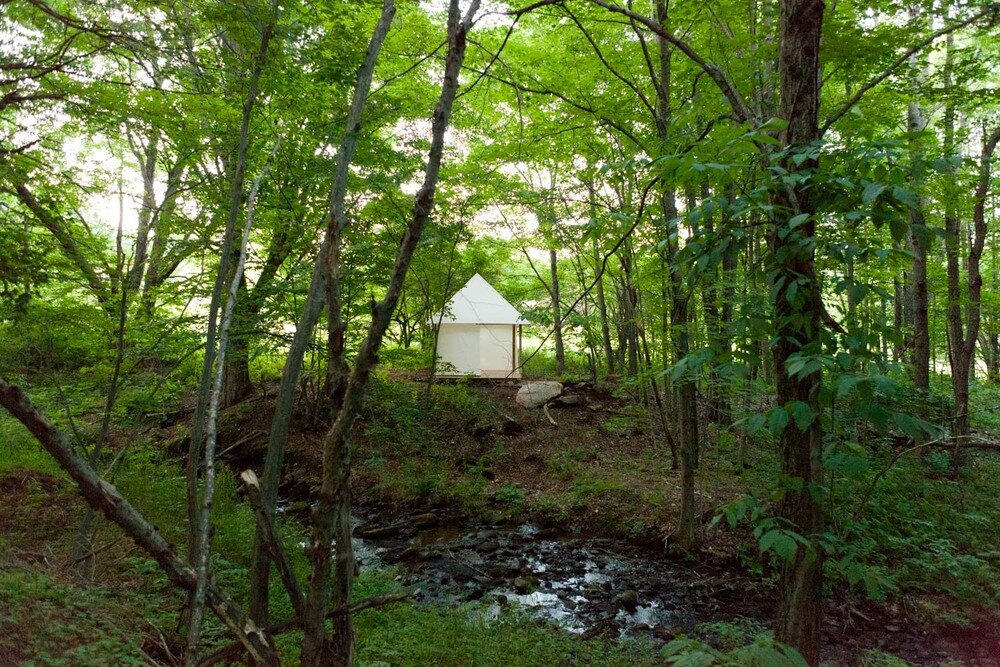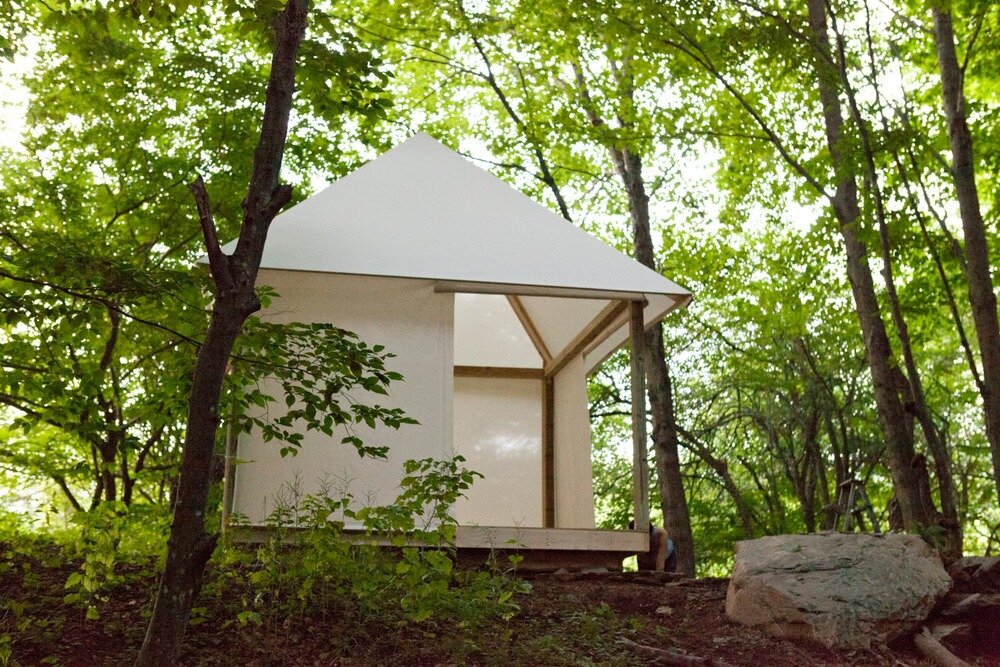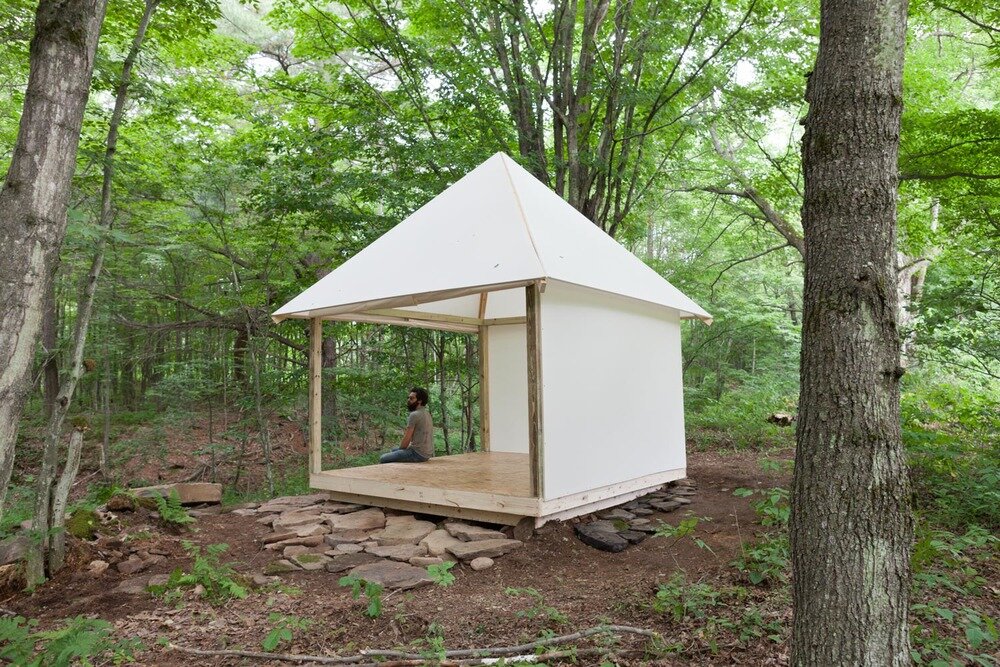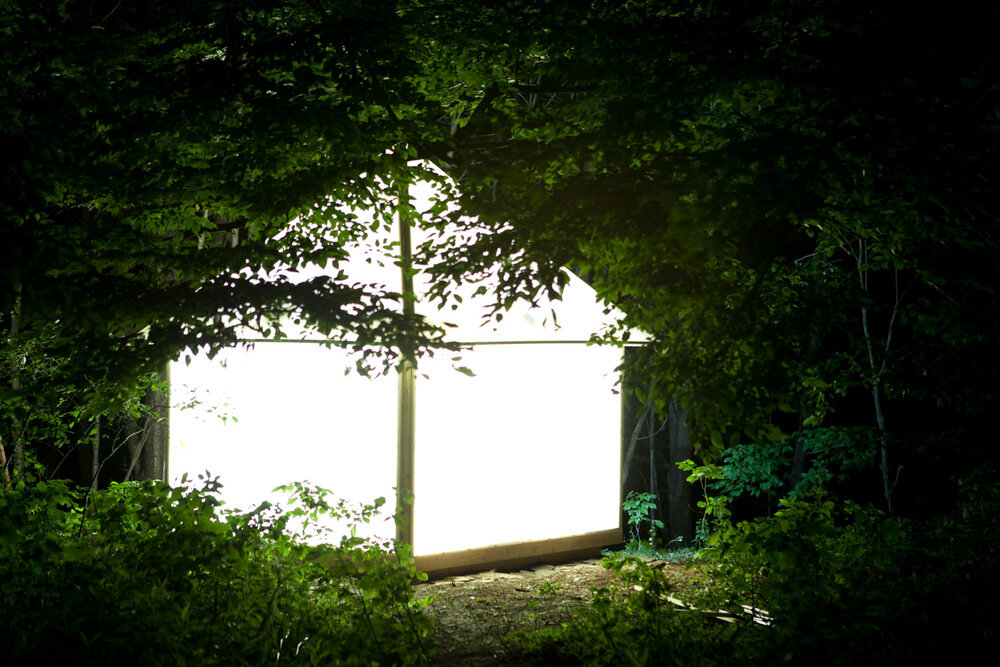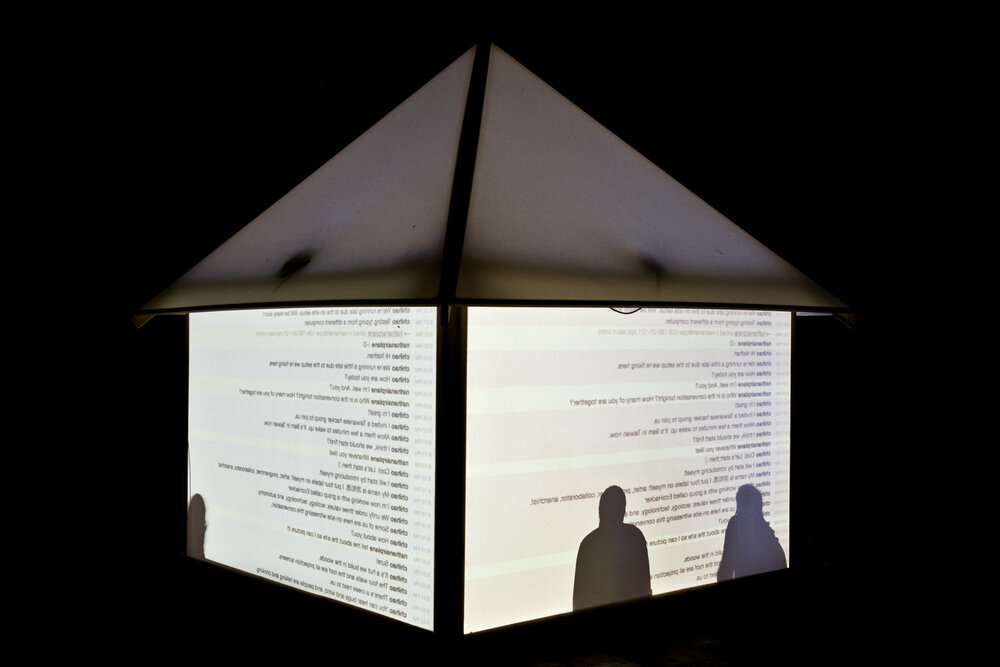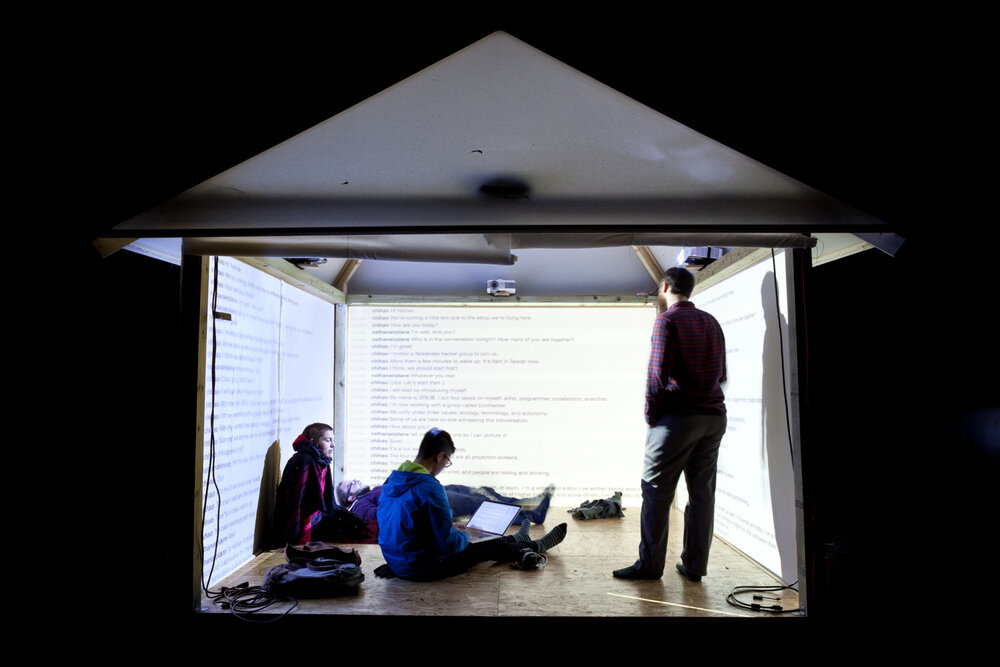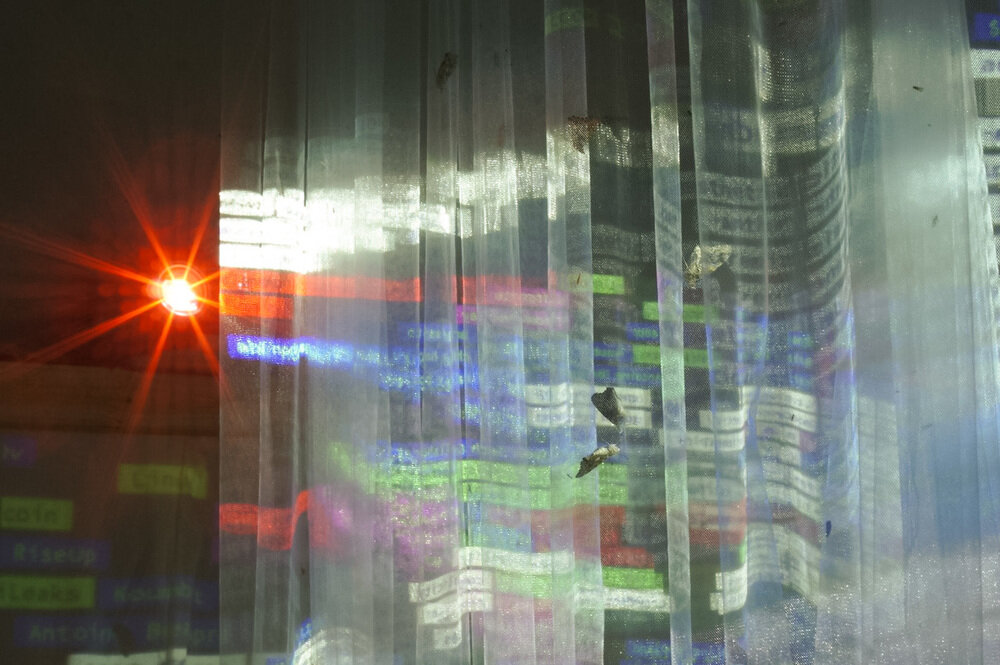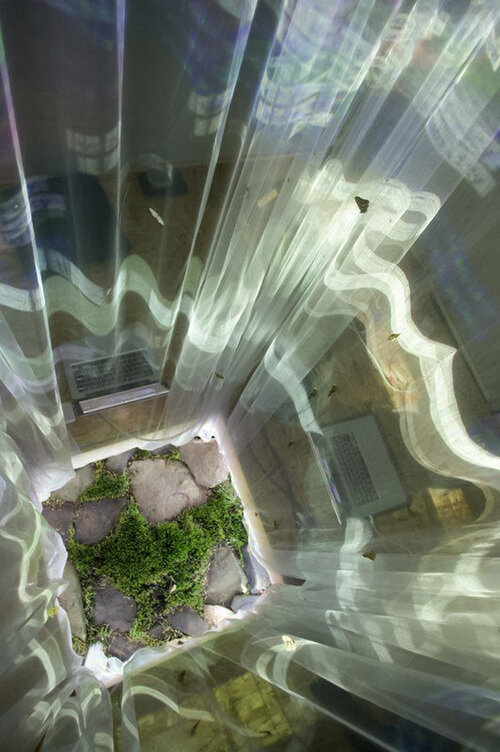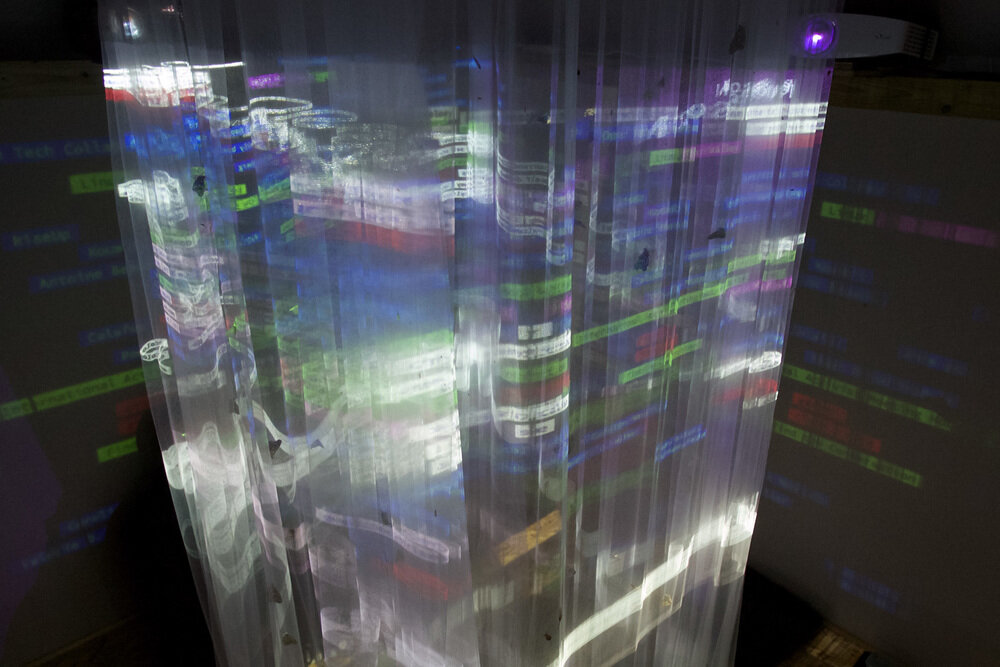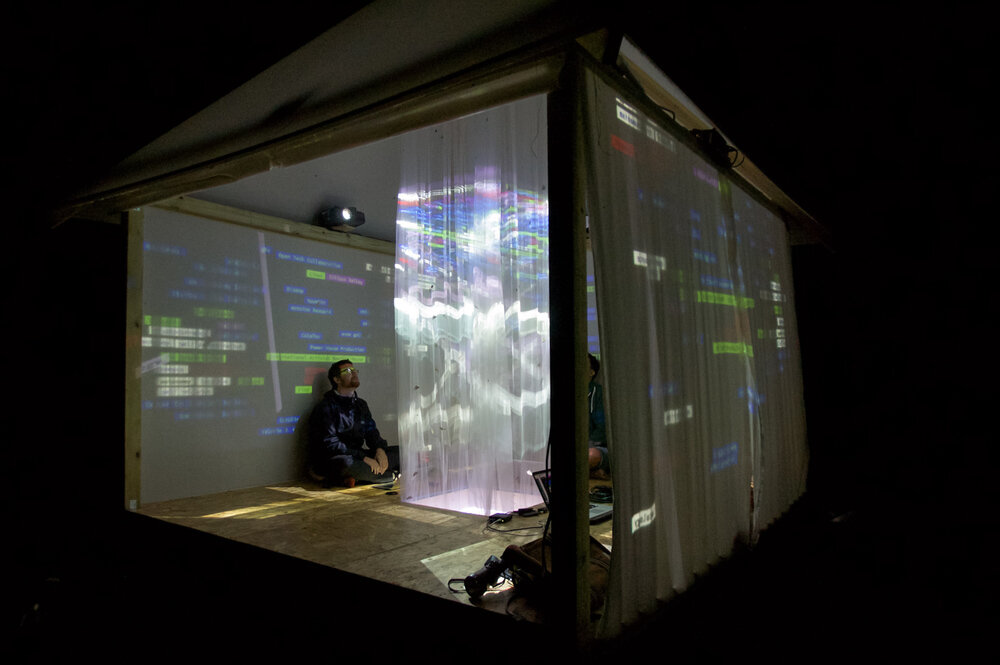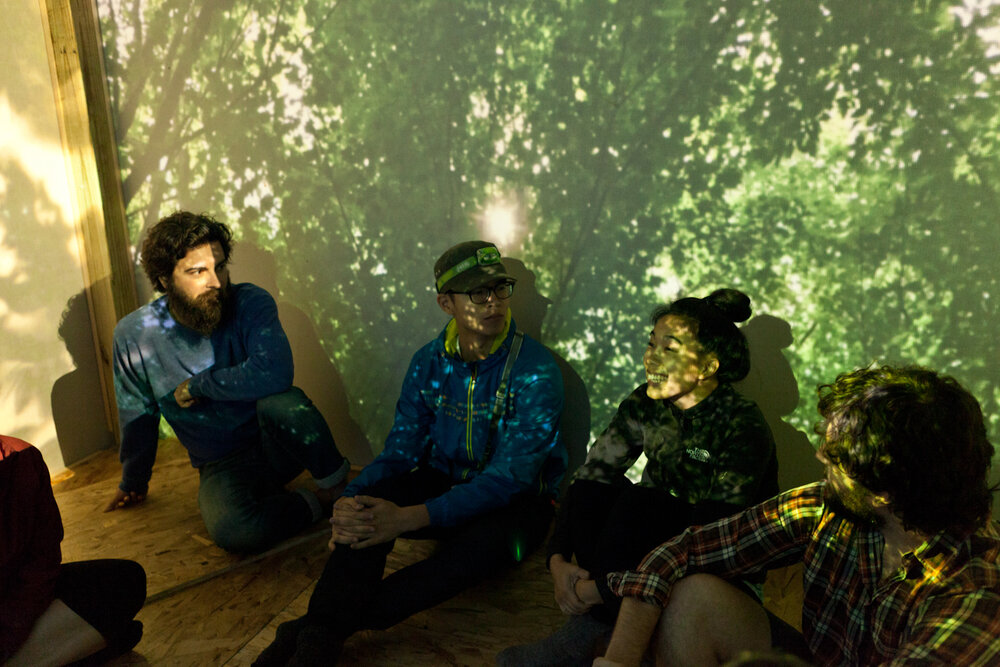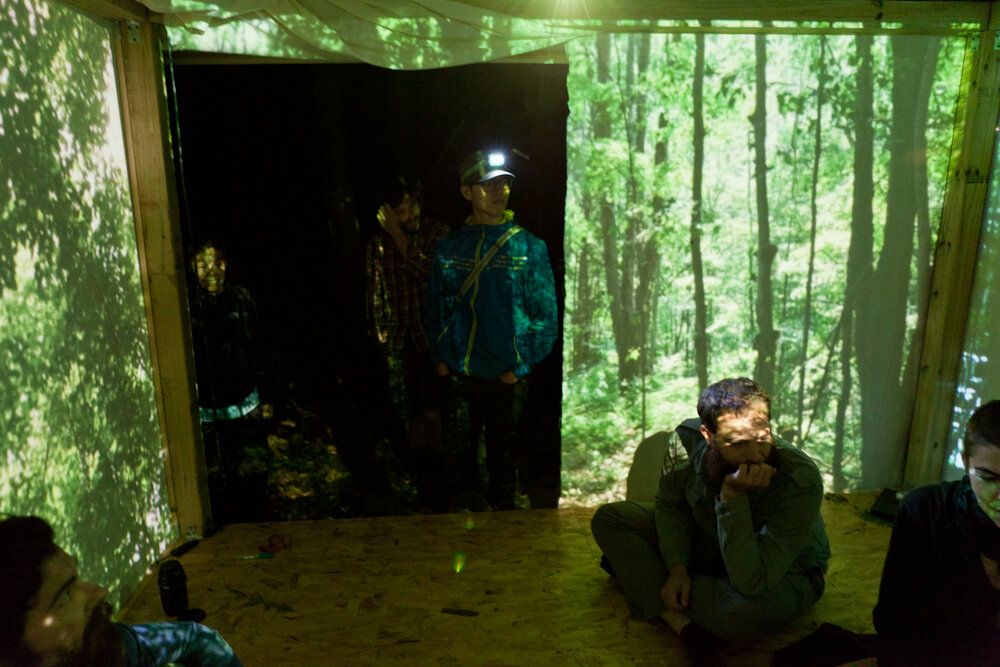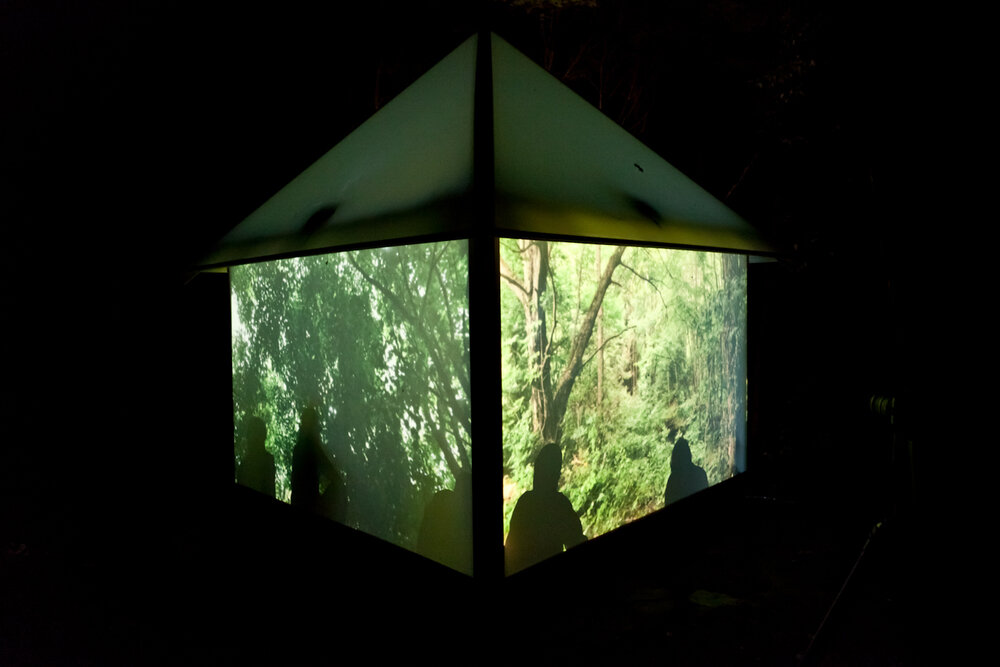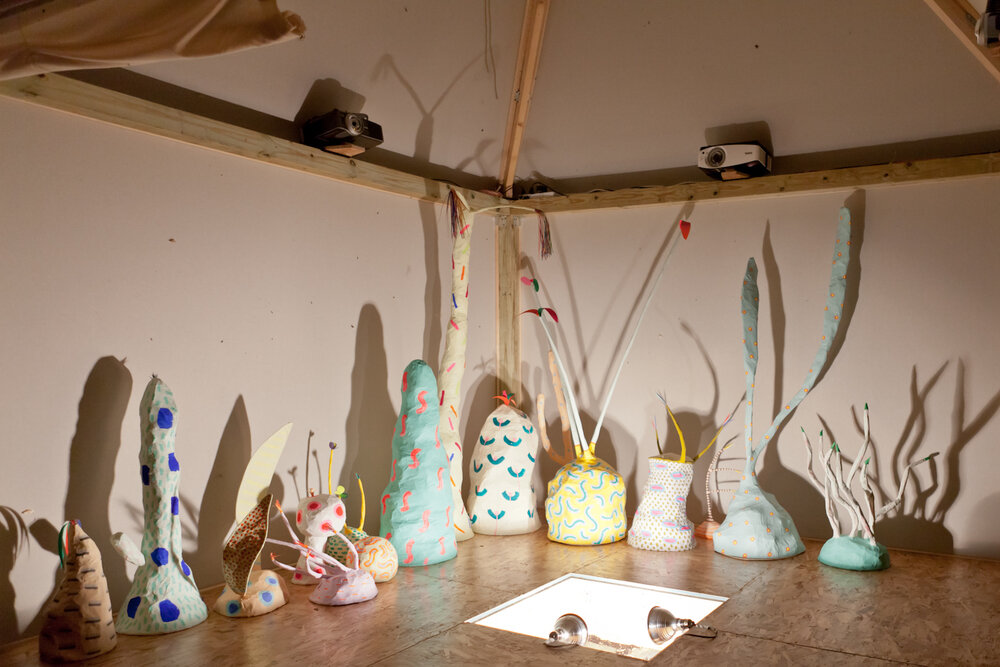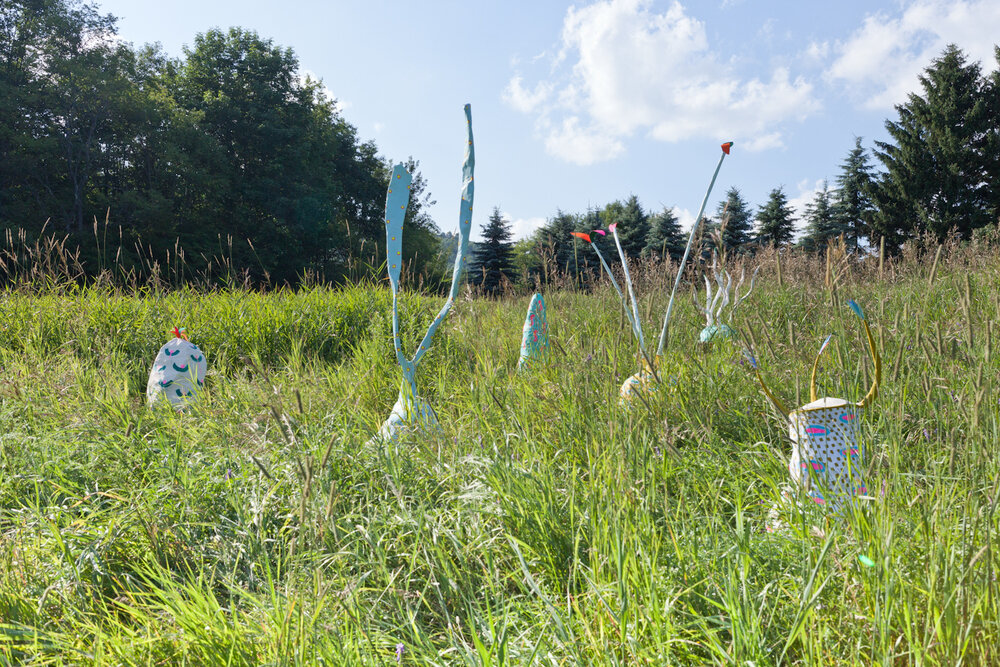core 2014
SOLARPUNK ARTS & LIVING
utopia, ny, the site
In the summer of 2014, Delta_Ark and Biome Arts co-organized a large scale collaborative project: a two-week symposium on ecology, technology and autonomy that culminated in the construction of a networked, semi-autonomous structure in the woods of Delhi, New York. The aim of the symposium was to identify organizations, people and places that were building the kind of future we would like to live in: an ecological, open source equitable one. Multiple other artists participated, dropping by to study and live with us throughout the period, ultimately contributing their own artistic projects, based on our collective research.
THE MAP
FOREST PAVILION, the gathering space
The Forest Pavilion is a temporary structure set in the woods of the Catskill Mountains. The pavilion was designed by Terri Chiao and built collaboratively in five days by all the artists in residence at the symposium. As an architectural trope, the structure in the woods is a place separate from society and a space of reflection. The pavilion is a comfortable nest in the midst of a more wild nature, amidst the wilderness of plants, pests, predators, prey, the elements, yet separate from them as well. This idea of a building as a place of projection and reflection is manifested in a 12 x 12 x 12’ wood-and-muslin structure with walls that serve as projection screens. Two adjacent walls are fixed screens for rear and front projection and the other two adjacent screen-walls can be opened to face the forest. The raised platform includes a central pit for storage, artwork, and gathering.
STUDYING the future, TOGETHER
During our stay in Delhi, we cooperatively managed the site and explored how our local engagement connected to the larger fields of environmental and open-source politics. For a period of two weeks, we cooperatively shopped, cleaned, budgeted, scheduled, and coordinated art projects. In the mornings we listened to interviews of thinkers (The Conversation). In the evenings, we presented our work, discussed our personal politics, and charted thoughts on the wall, mapping interrelationships between people, projects, and concepts along the axes of ecology, technology, and autonomy. We hosted group meetings during the day to find our own definition and feasibility of collectivity and mutualism in art and society. We also arranged nightly meetings with international activists (Aengus Anderson, contributors at g0v.tw, Nathan Schneider) in the Forest Pavilion over a public IRC channel #iameetinghouse on Freenode (see below). Ultimately, we created a digital map of our research (below) that would be embedded inside a collective project on site (next paragraph).
the core
Situated within Forest Pavilion is Delta_Ark's collaborative installation with Biome Arts, The Core. The digital component of Core was an interactive mind-map editable by anyone in the world with internet access. Accessible within The Core via four computer terminals, the mind-map evolved as participants discussed, rearranged, and added new topics along an axial coordinate system. The mind-map was also projected on to a multi-layered column of sheer fabric at the center of The Core. The biological elements of The Core include cultivated Vanessa cardui butterflies. These insects were drawn to light of the projected mind-map, shifting the attention of participants and thus the flow of conversation. These conversations from the core inspired the following works by the participant artists: forest portrait, paper plants, hardware stories and asemic tilt. We viewed this piece as a way to ‘institutionalize’ and ‘extend’ the conversations that we were having within this temporary monument.
FOREST PORTRAIT
Terri Chiao and Adam Frezza used footage taken during daytime meditations in and around the pavilion to project onto the walls of the structure at night. The footage draws attention to natural sunlight “projections” through the forest canopy. The imagery also catalogs the softly rustling forest scenes, moss tips bending with the wind and sunlight glittering across the surface of a stream.
PAPER PLANTS
Terri Chiao and Adam Frezza created paper plants that examined the tension between nature and artifice. The series is an exploration of shape, mark, color, and character in the form of abstract papier-mâché sculptures. The plant sculptures visit a meadow and forest where the real and imaginary plants become the subject of a series of photographs. The sculptures were on view in the Forest Pavilion for a one-night gallery opening in the forest.
hardware stories
Anne Goldenberg created Hardware Stories, a research-to-production performance about the material and mineral origins of our electronics, the condition of their production and their ultimate destination. Our computers deal with the immaterial: speech, thoughts, knowledge; therefore, we think of them as immaterial. Yet, from violent extraction in African mines, to poisonous soldering and repetitive assembly by Chinese companies, the workers that make our everyday electronics live under severe physical and psychological threat. The performance was a first exploration of the spiritual and ecological dimensions of these supply lines. It involved one dying computer, three humans, two projectors, some images stolen from the web, poetry, magical and spiritual and textual inspirations, a dead butterfly, a dead hornet, plants, stones, a theremin and a thread of LEDs.
Asemic Tilt
Brian House set up a four-channel sound system projecting out from the structure and into the surrounding territory. He sent pulses into each speaker whose rate was determined by the angle above the horizon of four celestial bodies (sun, moon, uranus, saturn). The pitches of the pulses were generated via an algorithm mimicking Arvo Pärt’s tintinnabuli method of voice layering. Finally, the timbre and texture of the sound came from him as he meditated while maintaining a note on a melodica for the duration of the piece. Here to Listen. Jonathan Sims created digital images to accompany the performance (animated with the technical assistance of Gene Kogan). Jonathan exhibited a new crop of asemic glyphs and linear scripts arrayed with new and abstract imagery.
the solidarity economy and solarpunk
This project pre-dates the solidarity economy network and the development of the solarpunk science fiction movement; however, it’s what it points to. Since this project, the systemic crises that Occupy initially identified have continued to advance, which has inspired people to seek for and create alternative forms of social organization. The Coalition for the New Economy represents a broad swathe of groups that are working to find new models of cooperative ownership and investment, as well as economic democracy. Solarpunks.net points towards a new genre of science fiction that is explicitly attempts to render a utopian future of local ecological stewardship combined with open source decentralized technology. Our project represented a microcosm of these concerns, both in practice, research and in making.

